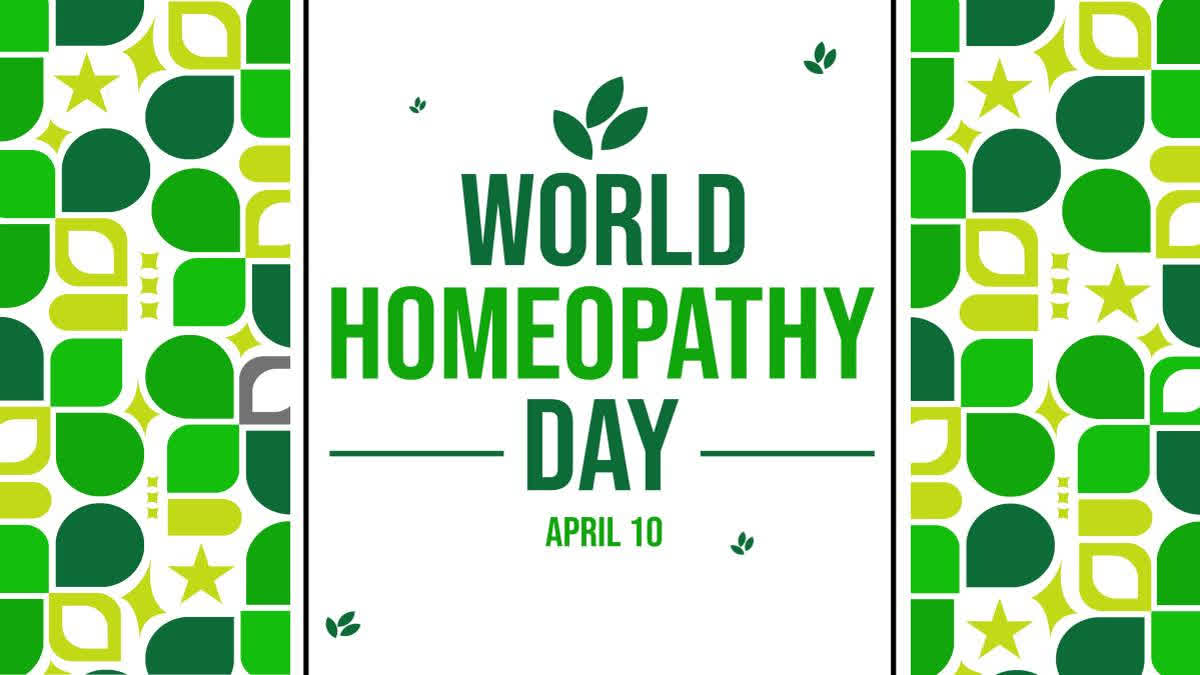Hyderabad: Along with the rest of the world, India is celebrating World Homeopathy Day on April 10 with the theme “Homeoparivar: One Health, One Family." Homeopathy, which comes under the AYUSH (Ayurveda, Unani, and Homeopathy) system of medicine, is a pseudoscientific system of alternative medicine. Interestingly, a Parliamentary Committee has also suggested to the central government that it incorporate awareness of Ayush systems into school curricula to minimising knowledge barriers between Ayush and modern medicine.
World Homeopathy Day:It is celebrated on April 10 to mark the birth anniversary of the founder of Homoeopathy, a German physician, Dr. Christian Frederick Samuel Hahnemann. The day highlights the importance of the field of medicine. Homoeopathy was introduced as a scientific system of drug therapeutics by Hahnemann in 1805. World Homeopathy Day is also celebrated to understand the challenges and future strategies to develop homeopathy. The day aims to spread awareness about homeopathy as a form of medicine and work towards improving its success rate.
What is homeopathy?Homoeopathy medicines are safe to use because they rarely cause side effects. It is based on the principle of ‘like cures like’. It means that a substance in a small amount will cure the same symptoms it causes if taken in large amounts. Homoeopathy is derived from the Greek words homeo, which means similar, and pathos, which means suffering or disease. Practitioners of homoeopathy use tiny amounts of natural substances, like plants and minerals.
Homeopathy trend in India:Homeopathy is one of the popular medical systems in India. The country is one of the biggest homoeopathic drug manufacturers and traders globally. In India, homeopathy is as popular as Ayurveda, both of which fall under the purview of the AYUSH ministry.
India always embraces traditional alternative medicine alongside conventional approaches, recognizing their complementary potential in addressing healthcare needs. In 2007, the Department of Ayush launched Homeopathy for Mother and Child Care, which benefited about 9, 12, and 478 patients. The initiative was aimed at raising awareness about homeopathy’s role in maternal and child health.
Homeopathy as a cost-effective alternative:Homoeopathy presents a comprehensive approach to public health initiatives in a cost-effective manner, promoting better health outcomes beyond addressing nutritional deficiencies alone. Its distinct approach to addressing nutrition-related issues is rooted in the principle of individualization, considering each patient’s genetic and biochemical uniqueness. This personalised treatment approach extends to diet and medication selection, focusing on improving nutrient absorption and utilisation in cases of deficiency disorders.
Role of Homoeopathic Doctors:Homoeopathic doctors have played a pivotal role in conducting awareness activities and making significant contributions to the medical workforce. The increased awareness among the populace, facilitated by extensive health promotion campaigns, leads to the adoption of healthier lifestyles and hygienic practices, thereby enhancing the nation’s overall health status.
Parliamentary Committee’s Opinion:The Parliamentary Committee on Health and Family Welfare noted that, like China, the Ministry of Ayush’s efforts to establish 12,500 Health and Wellness Centers (since renamed as Arogya Mandirs) go a long way in establishing Ayush as a medicinal system with the potential to fulfill the objectives of the universal health program. Like China, the government of India should also devise ways to integrate the Ayush system with poverty alleviation initiatives to boost community engagement.
The Committee suggests incorporating awareness of Ayush systems into school curricula, a significant step towards minimizing knowledge barriers between Ayush and modern medicine.
